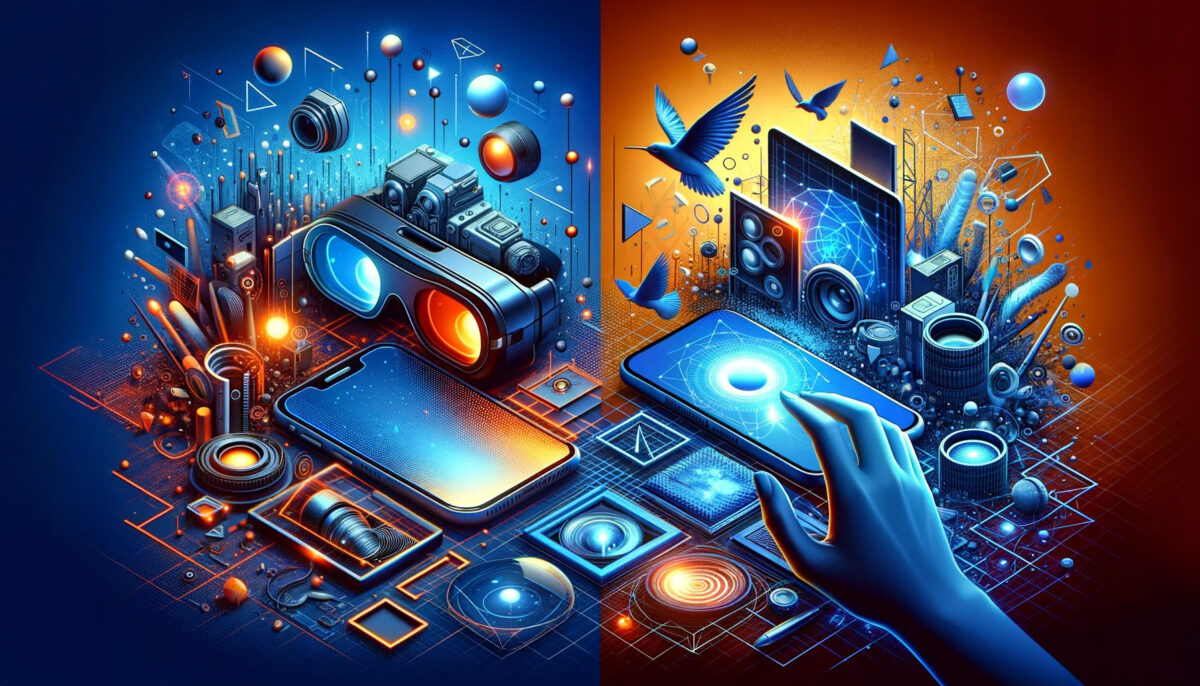In the rapidly evolving landscape of digital marketing, two technologies have emerged as game-changers: Augmented Reality (AR) and Computer-Generated Imagery (CGI). Both possess the power to transform how brands connect with their audiences, yet they do so in vastly different ways. AR stands out for its ability to create immersive, interactive experiences that not only engage users but also encourage the creation of user-generated content (UGC). In contrast, CGI, while visually stunning, offers a more passive viewing experience. This distinction is crucial in understanding why AR is leading the way in fostering higher user engagement and why CGI, despite its merits, falls short in this regard.
Understanding AR and CGI
Augmented Reality (AR) integrates digital information with the user’s environment in real time. AR uses the existing environment and overlays new information on top of it. This technology has found its niche in marketing, offering unique, immersive experiences directly on consumers’ smartphones and devices.
Computer-Generated Imagery (CGI), on the other hand, refers to the creation of digitally enhanced visuals to create realistic images and animations. Used extensively in movies, television, and video games, CGI in marketing often involves creating animated advertisements showing impossible scenes like crushing buildings, etc. Since this scenes never happened, CGI is often called Fake OOH, due to the depiction of the fake scenes to the users.
While both technologies can captivate audiences, AR’s interactive component invites an active participation that CGI cannot replicate. Moreover, AR experience can be recorded and shared generating “viral” in the same way, as CGI does.
The Immersive Experience of AR in Marketing
AR’s defining feature in marketing is its ability to create immersive experiences. For instance, beauty brands use AR filters to allow customers to “try on” makeup or hairstyles in real-time, directly from their devices. Furniture brands enable customers to visualize how products would look in their own homes. These applications not only engage users but also significantly aid in their purchase decisions.
The immersive nature of AR results in higher user engagement. By interacting with products in their environment, consumers form a deeper connection with the brand, leading to increased interest and, ultimately, higher conversion rates.
The Passive Nature of CGI in Marketing
CGI, while effective in creating visually appealing content, does not engage users in the same interactive manner. Product visualizations and animated commercials can highlight features and benefits beautifully but lack a direct call to action for viewer participation. As a result, CGI often serves as a one-way communication tool, with limited potential for fostering deep, interactive user engagement.
AR’s Edge: Engaging Users and Generating UGC
The interactive capabilities of AR not only engage users but also empower them to become content creators. AR filters on social platforms have led to viral trends, with users eagerly sharing their augmented experiences. This UGC acts as a powerful endorsement for brands, expanding their reach and influence far beyond traditional marketing efforts.
Successful AR campaigns exemplify how AR can generate buzz and virality. The key is AR’s ability to blend brand messaging with personal user experiences, making the promotional content feel more authentic and relatable.
CGI’s Role: Visual Storytelling Without Immersion
Despite its limitations in user engagement, CGI holds a significant place in marketing for its ability to craft compelling visual narratives. High-quality CGI can convey a product’s aesthetics and functionality in ways that real-life photography sometimes cannot. However, the lack of interactivity means that while CGI can inform and entertain, it doesn’t typically inspire the same level of user action or content creation as AR.
Conclusion
The contrast between AR and CGI in marketing boils down to the difference in immersion and engagement. AR invites users into an interactive experience, transforming passive viewers into active participants and content creators. This engagement not only enhances the user experience but also amplifies brand reach through UGC. CGI, while a powerful tool for visual storytelling, lacks this interactive dimension. As digital marketing continues to evolve, the integration of AR into marketing strategies represents a forward-thinking approach to consumer engagement, one that values and leverages the active participation of its audience. In a world where content is king, AR’s ability to generate authentic, user-driven content sets it apart as the crown jewel of digital marketing technologies.



